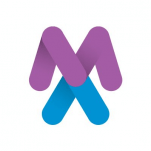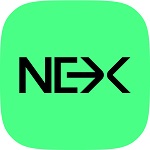 | BlockMedx (MDX)ICO BlockMedx is HIPAA-compliant, end-to-end solution for transmitting DEA Controlled Drug prescriptions such as prescription opioid pain relievers and others, from physicians to pharmacies using the Ethereum blockchain. IMPORTANT: By investing in this business you agree to ourDisclaimer. All information including our rating, is provided merely for informational purposes. CryptoTotem does not provide investment advice. |
Overview
|
Technical details
Ethereum ERC20 standard token.
What is BlockMedx
A closed-end, cryptographically secure solution for transmitting prescriptions using the Ethereum blockchain
BlockMedx restores complete control of prescriptive authority to prescribers. No more prescription forgeries, duplicates, or over-prescribing
Each prescription must be paired to a native MDX token which ensures the security of the network. Patients will also use MDX tokens to pay their co-pays at their pharmacy and doctor's office.
DetailsToken supply: 200000000LegalBlockchain Platform: WanchainRegistration country: United States Registration year: 2017 Office address: 110 West Vine Street, 3rd Floor, Lexington, KY, 40507 | Token infoTicker: MDXType: Utility-token Token standard: ERC-20 Accepted currencies: ETH Token distribution: Token distribution 55% Core team and advisors 25% Facilitate pilot projects and further development 20% |
BlockMedx Roadmap
The idea of BlockMedx is born;
Start of conceptual work.
Development of basic prototype;
Outreach to relevant stakeholders and discussion of proposed solution.
Completion of MVP;
BlockMedx network goes live.
Private sale;
MassChallenge Accelerator start.
Public token sale;
Intensive outreach to strategic partners.
Version 2 Application Upgrades as Protocol Advances.
Intensify implementations with healthcare systems;
Rapid scalling into additional states with the highest opioid death rates;
EMR and Telehealth platform API Access and Integration.
Key partnership with addiction treatment organizations for patient education, communication, and early intervention;
Expansion pf network into all prescription drugs with incorporation of communication, education, and early intervention incentive structures.
Partnerships with payors and healthcare systems to allow discounted payments through patient portal and introduce new value based incentive structure that promotes early prevention rather than treatment.
ML/AI implementations to automate detection of fraud and abuse in the healthcare system - important to prevent patients from being lost in the system after it is too late;
Integration with Pharmaceutical supply chain to prevent counterfeit drugs from entering the market.
Project team









Advisors

















